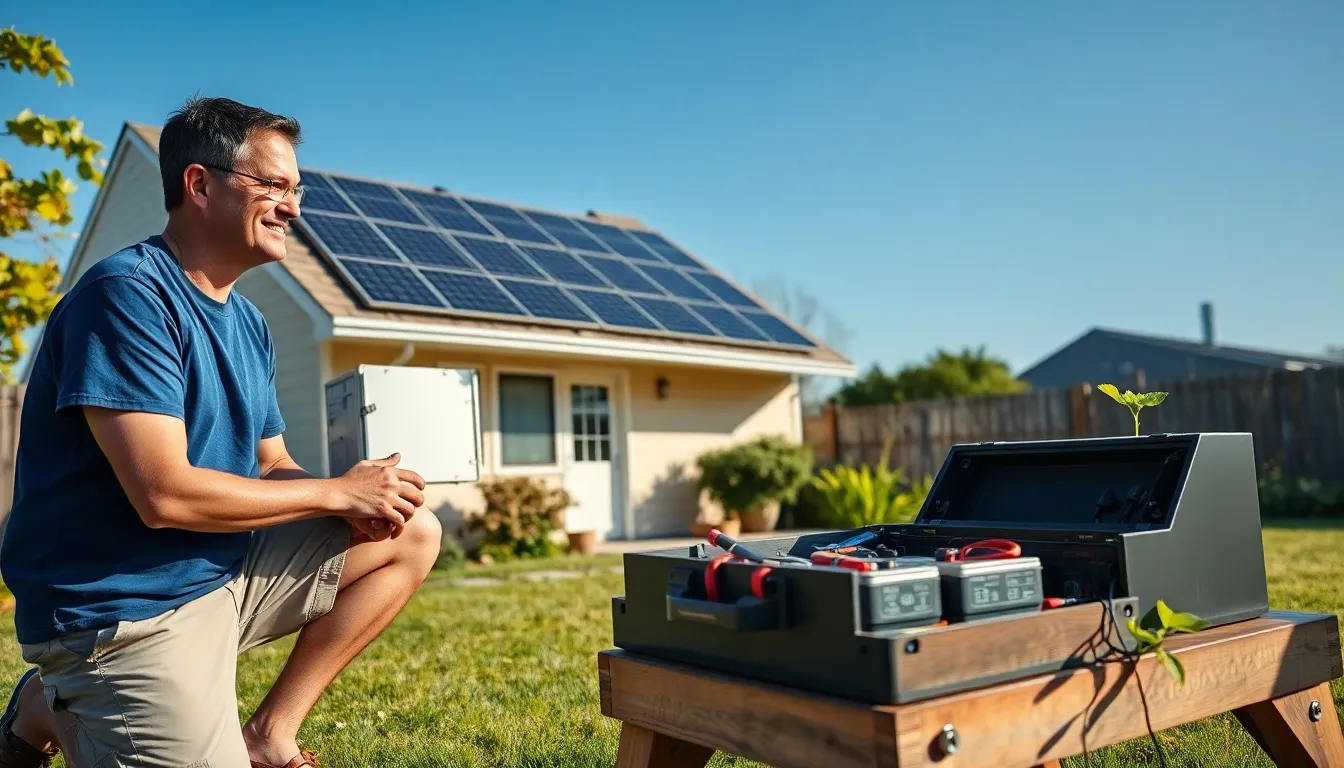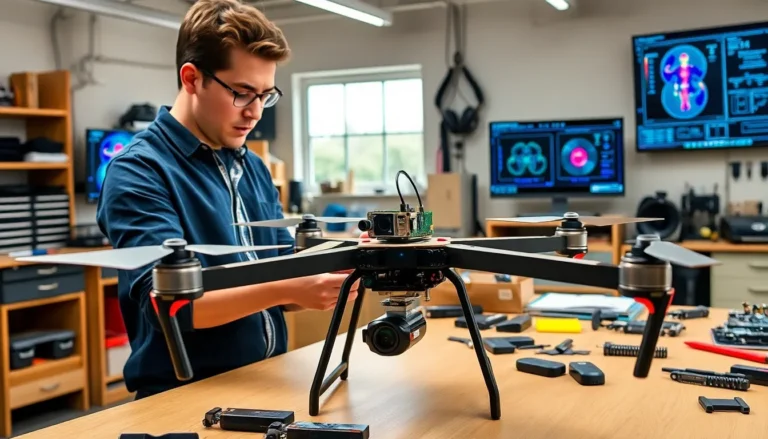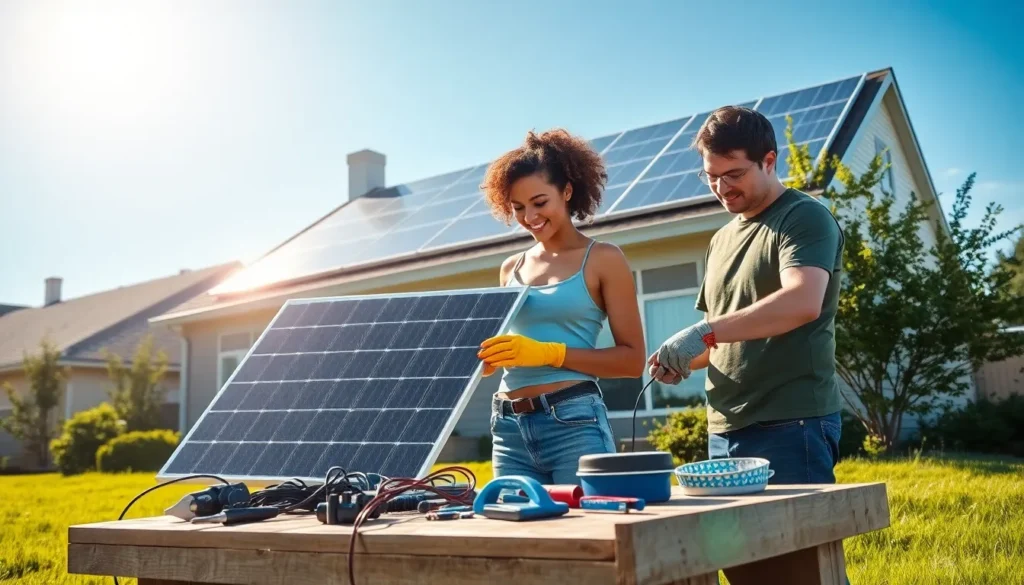Table of Contents
ToggleAs sustainability becomes an essential part of modern living, DIY solar energy systems have emerged as a practical and rewarding solution for homeowners. Homerocket Realty embraces this transition, offering insights into how individuals can harness solar power for their benefit. In this guide, readers will learn about the fundamentals of DIY solar energy systems, the advantages of going solar, and the steps involved in creating a personal solar setup that reflects the essence of sustainable living through the Pangolin concept.
Understanding DIY Solar Energy Systems

DIY solar energy systems empower homeowners to generate their own electricity by harnessing natural sunlight. This process usually involves solar panels, which convert sunlight into electricity, along with other essential components like inverters, batteries, and charge controllers.
In essence, understanding how to build a DIY solar setup begins with grasping the basic components:
- Solar Panels: These crucial elements capture sunlight and convert it to usable electricity.
- Inverter: This device transforms direct current (DC) produced by solar panels into alternating current (AC), which is the standard for most household appliances.
- Battery Storage: Batteries store excess energy for use during cloudy days or nighttime.
- Charge Controller: This component regulates the flow of electricity to prevent battery overcharging.
With the fundamental components in mind, creating a DIY solar system becomes a tangible goal. Each aspect plays a role in generating, storing, and distributing energy effectively.
Benefits of Going Solar
The transition to solar energy brings numerous benefits that extend beyond just reducing electricity bills.
The Pangolin Concept: Sustainable Living
The Pangolin Concept emphasizes a commitment to environmentally conscious living. By choosing solar energy, homeowners are taking a significant step towards sustainability. Here are some of the notable advantages:
- Reduced Energy Costs: By producing one’s own electricity, homeowners can drastically reduce their dependence on grid power, leading to lower utility bills.
- Environmental Impact: Solar energy is a clean, renewable resource that reduces carbon footprints and contributes to combating climate change.
- Energy Independence: Self-sufficiency through solar energy allows individuals to control their energy sources, enhancing resilience amid fluctuating energy prices.
- Increased Property Value: Homes equipped with solar energy systems often see an increase in market value, appealing to eco-conscious buyers.
Why Choose a DIY Approach?
Opting for a DIY solar energy system offers a unique combination of benefits, including cost savings and personalized setups. Individuals can tailor their systems to meet specific energy needs and preferences.
Key Components of a DIY Solar System
A successful DIY solar project starts with understanding and sourcing various component types, including:
- Solar Panels: Select from monocrystalline, polycrystalline, or thin-film options based on efficiency and budget.
- Batteries: Consider lead-acid or lithium-ion batteries depending on required performance and lifespan.
- Inverters: Choose between string inverters, microinverters, or hybrid systems to fit the energy setup.
Installation Process for Solar Panels
The installation process can be broken down into actionable steps:
- Site Assessment: Evaluate roof orientation, shading, and tilt.
- Design the System: Determine how many panels are needed based on energy consumption.
- Mounting: Securely mount the solar panels using appropriate hardware.
- Wiring: Connect the solar panels to the inverter and batteries, following safety guidelines.
Financing Options for Your DIY Solar Project
While the upfront cost of solar energy systems can be daunting, various financing options can help alleviate these expenses.
Government Incentives and Rebates
Many regions offer financial incentives, such as tax credits and rebates, making solar energy more accessible. These programs can substantially reduce the initial investment required for a DIY installation. Homeowners should research local and federal incentives to maximize savings. Also, some states offer specific programs that support local residents in transitioning to solar.
Determining Your Energy Needs
Before embarking on a DIY solar project, it’s critical to assess one’s energy consumption. Estimating energy needs involves:
- Tracking utility bills to evaluate average monthly usage.
- Identifying peak usage times to design an efficient system around critical needs.
- Considering future energy requirements, especially if plans include adding electrical appliances or expanding the household.
Maintenance and Troubleshooting Tips
Maintaining a DIY solar energy system ensures optimal performance and longevity. Here are some essential tips:
- Regular Cleaning: Dust and debris can hinder solar panel efficiency: cleaning panels every few months is beneficial.
- Inspect Components: Routinely check wiring, inverters, and battery conditions for signs of wear or damage.
- Monitor Performance: Use monitoring systems to track energy production, allowing homeowners to quickly identify issues.
Conclusion
Embracing a DIY solar energy system through Homerocket Realty does not just promote sustainability, but empowers homeowners to take control of their energy production. By understanding the fundamentals of solar systems, recognizing the financial incentives, and assessing energy needs, individuals can create an efficient and personalized solar solution. The environmental benefits, alongside the potential for cost savings and energy independence, make the journey toward sustainable living both rewarding and practical.







